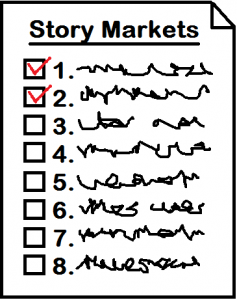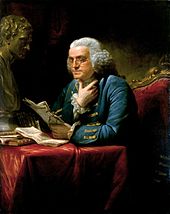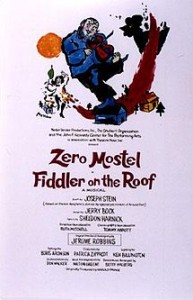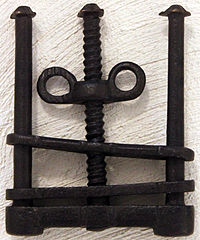What’s that? You say you’ve finished writing a story but you’re not sure which market to send it to first? It can be confusing, selecting among all the markets listed on Duotrope and Ralan and other similar sites.
Every writer makes these choices differently, so I’ll just share my method and the reasons for it. As always, you’re free to do as you wish.
First, prepare yourself mentally for the probability—the near certainty—of rejection. I’ve already discussed how to deal with rejection. My purpose now is to get you to make a prioritized list of markets you intend to send the story to, with the understanding that, most likely, the story won’t be snapped up by the first one.
 How do you make this prioritized list? If you wrote the story in response to an announced anthology, then the anthology would top your list. After that, I recommend going in order of highest-paying market to lowest based on searches of sites like Duotrope or Ralan. Each market on the list should be appropriate, in the sense that they’re asking for stories of the type that yours is. Don’t waste your time or some editor’s by sending to a market for which your story isn’t suited.
How do you make this prioritized list? If you wrote the story in response to an announced anthology, then the anthology would top your list. After that, I recommend going in order of highest-paying market to lowest based on searches of sites like Duotrope or Ralan. Each market on the list should be appropriate, in the sense that they’re asking for stories of the type that yours is. Don’t waste your time or some editor’s by sending to a market for which your story isn’t suited.
Why am I suggesting the order be based on payment? I suspect some of you are objecting that, as a beginning writer, your story couldn’t possibly be good enough for the highest-paying markets, so why start with them?
My response is—have some faith in your story. I’ve said before that editor’s reasons for rejecting your stories have everything to do with how the story clicks with them, how it matches what they’re looking for, and the quality of the writing. Their reasons have nothing to do with you personally.
The flip side of that should be obvious. An editor’s reasons for accepting a story have to do with the same criteria, and the writing quality is the only one of those criteria within your control. They don’t necessarily know you’re a raw beginner. It’s every editor’s dream to latch onto a beginning writer who shows considerable talent; they all want to be in at the start of a best-selling author’s career. All famous authors started out as beginners, tentatively sending out their work and wondering if it was good enough.
Wouldn’t it be a shame if you sent your story to a semi-pro, or token market, not knowing that a pro market would have accepted it? That’s why I say to aim high, then with each rejection, work your way down.
Later, as you gain experience and have some publication credits, you may establish relationships with one or more markets. At that point, those publishers may well move to the top of your market listings. Considerations other than payment alone may drive your priorities.
I welcome your comments about the advice I’ve offered. If you follow it and get your first story approved at a pro market, one person you should be sure to thank is—
Poseidon’s Scribe





